Electrochemistry of Carbon Materials: Progress in Raman Spectroscopy, Optical Absorption Spectroscopy, and Applications
- PMID: 36839009
- PMCID: PMC9961505
- DOI: 10.3390/nano13040640
Electrochemistry of Carbon Materials: Progress in Raman Spectroscopy, Optical Absorption Spectroscopy, and Applications
Abstract
This paper is dedicated to the discussion of applications of carbon material in electrochemistry. The paper starts with a general discussion on electrochemical doping. Then, investigations by spectroelectrochemistry are discussed. The Raman spectroscopy experiments in different electrolyte solutions are considered. This includes aqueous solutions and acetonitrile and ionic fluids. The investigation of carbon nanotubes on different substrates is considered. The optical absorption experiments in different electrolyte solutions and substrate materials are discussed. The chemical functionalization of carbon nanotubes is considered. Finally, the application of carbon materials and chemically functionalized carbon nanotubes in batteries, supercapacitors, sensors, and nanoelectronic devices is presented.
Keywords: Raman spectroscopy; carbon nanotube; electrochemistry; optical absorption spectroscopy; spectroelectrochemistry; voltamerometry.
Conflict of interest statement
The author may have a conflict of interest with Andrei Eliseev (Lomonosov Moscow State University). The funders had no role in the design of the study; in the collection, analyses, or interpretation of the data; in the writing of the manuscript; or in the decision to publish the results.
Figures





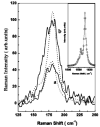



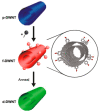




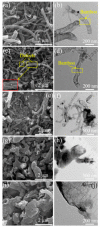

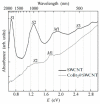
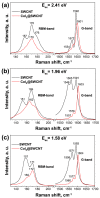




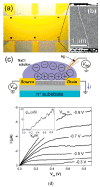






References
-
- Jeon I., Xiang R., Shawky A., Matsuo Y., Maruyama S. Single-Walled Carbon Nanotubes in Emerging Solar Cells: Synthesis and Electrode Applications. Adv. Energ. Mater. 2019;9:1801312. doi: 10.1002/aenm.201801312. - DOI
-
- Ferguson V., Silva S.R.P., Zhang W. Carbon Materials in Perovskite Solar Cells: Prospects and Future Challenges. Energ. Environ. Mater. 2019;2:107–118. doi: 10.1002/eem2.12035. - DOI
-
- Bati A.S.R., Yu L.P., Batmunkh M., Shapter J.G. Recent advances in applications of sorted single-walled carbon nanotubes. Adv. Funct. Mater. 2019;29:1902273. doi: 10.1002/adfm.201902273. - DOI
Publication types
LinkOut - more resources
Full Text Sources

